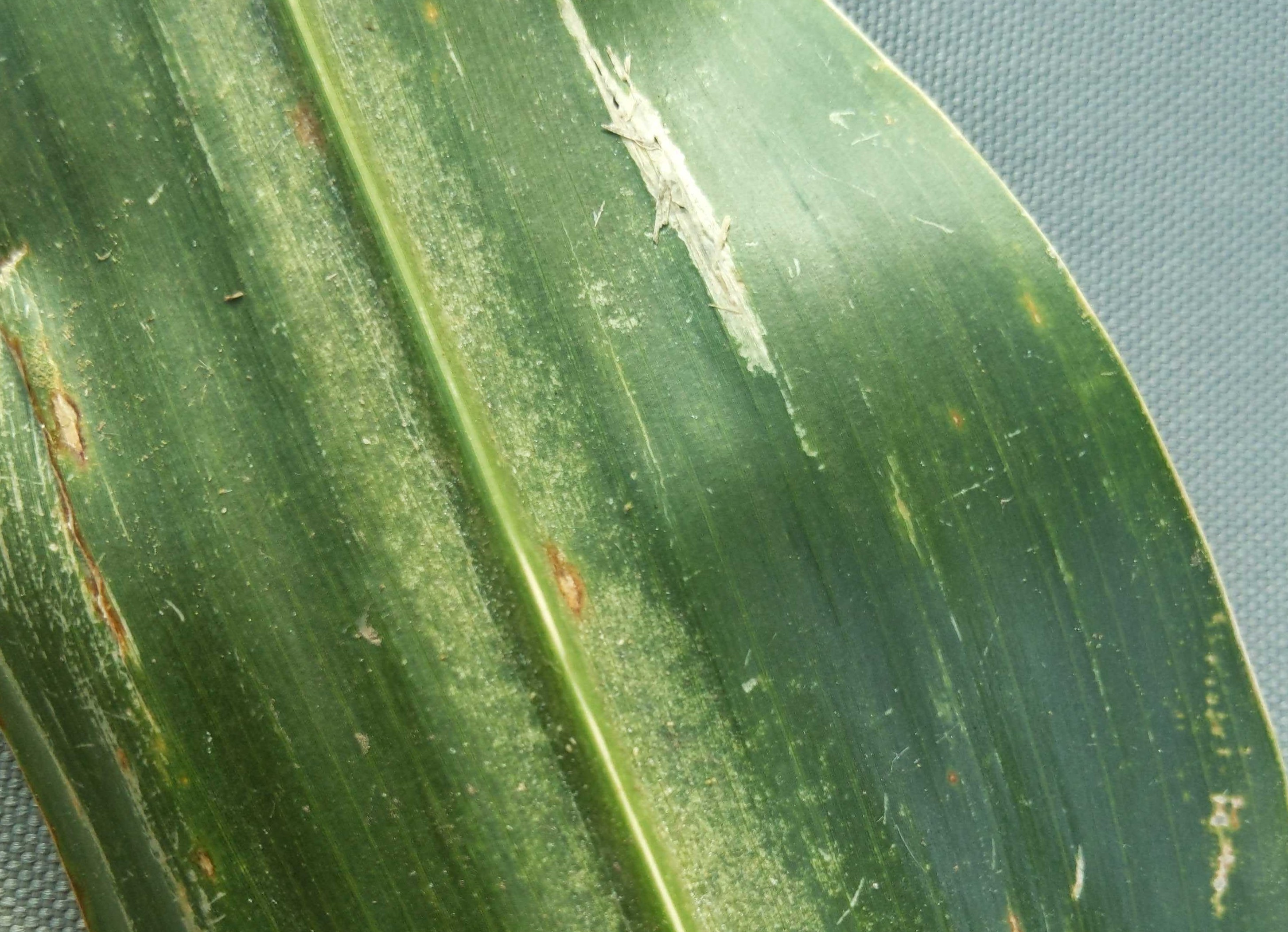

Spider mites are a seasonal pest that will commonly infest corn, but can also infest soybean fields when the weather is favorable for mite population increases and survival. Spider mites feed by sucking plant juices from the leaves, which will discolor and damage the infested leaf. Yield reductions can occur when spider mite colonies progress up the plant to the leaves above the ear during grain fill.
Predatory insects or fungal pathogens can often reduce spider mite populations. An early season insecticide can cause a population explosion by reducing the beneficial insect populations. Relative humidity over 80% is favorable weather for the fungal pathogens to begin infecting spider mite populations. Hot, dry weather is the most favorable for spider mite survival. High temperatures accelerates the egg hatch, and reduces natural occurring pathogens that kill mites.
Treat cornfields when spider mites colonize the leaves above the ear before the dent growth stage. A treatment of bifenthrin and dimethoate will provide the best knockdown of spider mite populations. After corn plants reach the dent growth stage, treatment is less likely to provide economic returns. Spider mite damage should be assessed similar to foliar diseases. If leaf injury is excessive, the result can be pre-mature leaf death when left untreated. Damage to leaves above the ear will cause the corn plant to rob nutrients from the stalk and roots, increasing the potential for stalk rot, lodged corn at harvest, and yield loss.
The best control for spider mites is preventing colony establishment. Adequate irrigation or rainfall and limiting crop stress helps. Use caution when tank mixing broad spectrum insecticide treatments with fungicide applications. These treatments will reduce beneficial insect populations and do little to control spider mites that have already colonized the lower leaves of the plants.